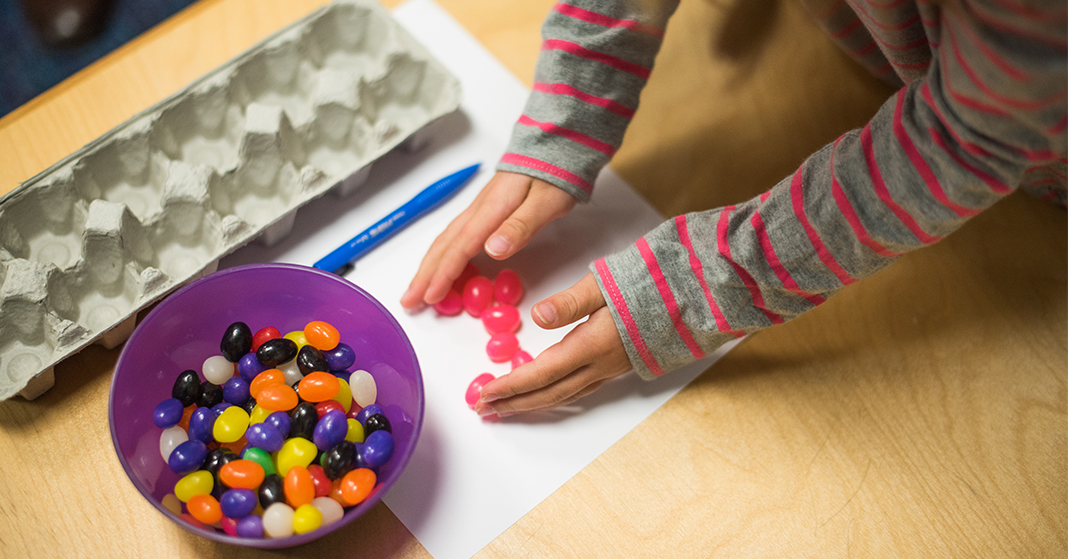
As your homeschool child becomes proficient in multiplication, it’s time to introduce division. Typically, children become comfortable with division in their third-grade year of math. But the end of second grade is a good time to introduce the concept.
Since math models God’s creational order, it helps to introduce division with physical objects. Using objects from God’s world to touch, play with, and observe, we can help children develop a number sense that fosters deep understanding.
Guided Hands-on Discovery of Division
Here’s a fun hands-on activity to introduce division in a non-pressure way. All you need is an empty egg carton with the lid removed and twelve small objects. I used jelly beans, but dried beans, beads, or any other small household items will work.
Remember, the goal is to develop number sense that leads to deep understanding. We don’t want to overwhelm our children.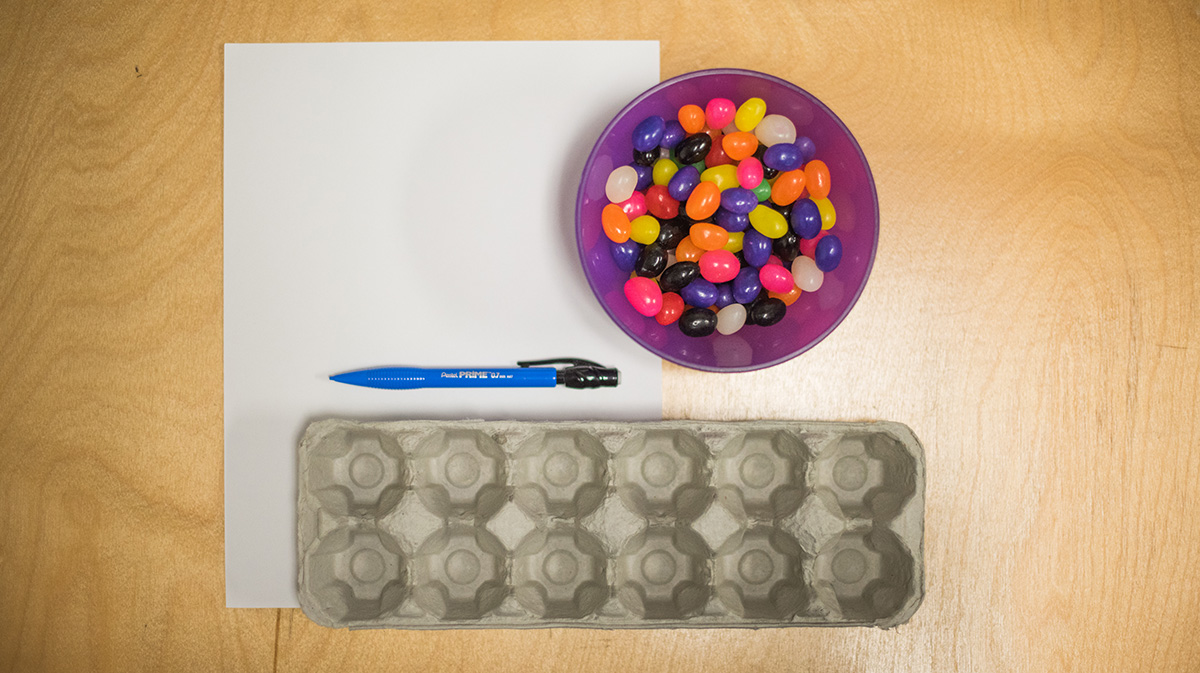
- Have your child place all twelve jelly beans in the egg carton, putting two in a compartment until all the jelly beans are used.
- Ask, “How many jelly beans did we start with?”
- Ask, “How many compartments are in use?” To find the answer, he can count out the six compartments that have two jelly beans.
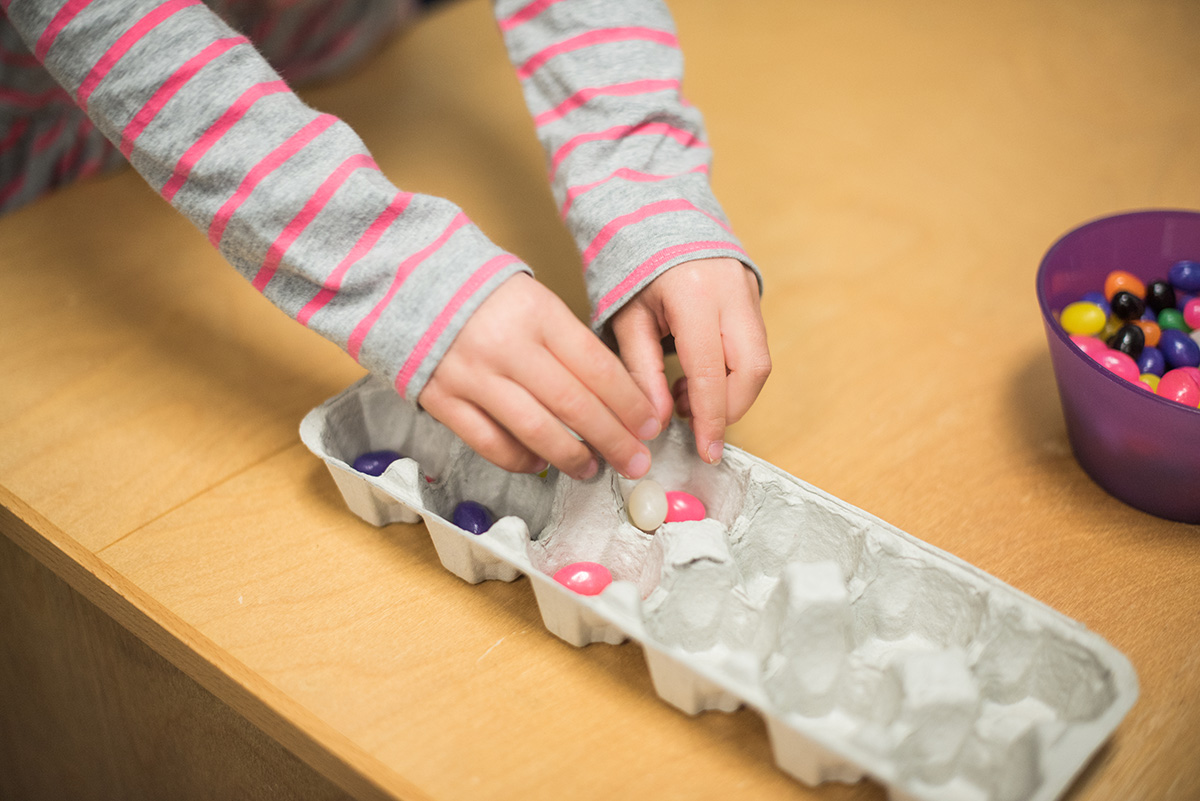
- Ask “How many jelly beans are in each of these compartments? It’s the same number in each one.”
- Dump out all the jelly beans and focus on the compartments.
- Direct your child, “Fill four compartments so that each compartment has the same number of beans.” Make sure your child feels free to make mistakes at this stage. Have him keep adjusting the number of beans until four compartment hold three beans each.
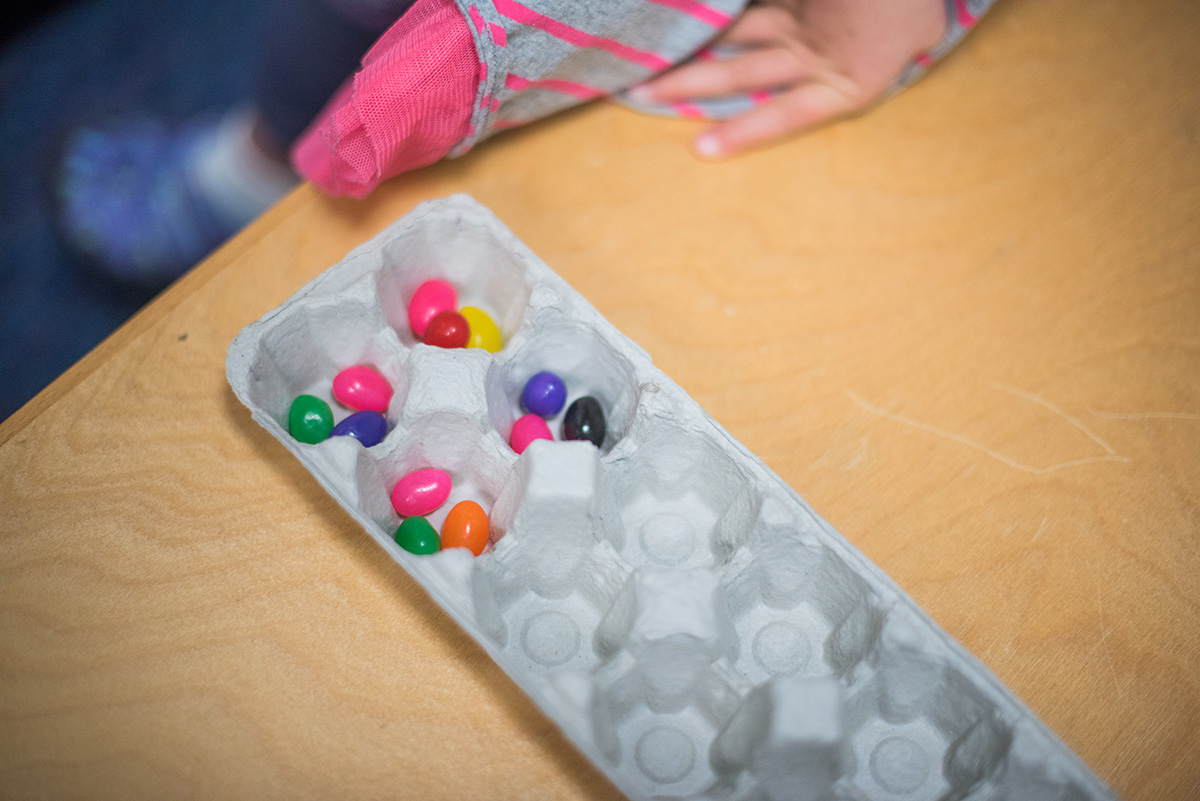

- Say, “This time fill three compartments so each compartment has the same number of beans. Were we able to still use all of our beans? How many are in each compartment?”
- Finally, ask, “How many compartments would we use if we put six jelly beans in each compartment?”
- After your child makes a prediction, allow him try it out.
- Once your child becomes comfortable with the process, explain that he has done division! Division is simply making equal groups or sets out of a larger number. So we could say that 12 beans divided into 6 sets equals 2 beans in each set. Or 12 beans with 3 beans in each set makes 4 sets.
- Now write out the equations that your child has already worked out with beans: 12 ÷ 2 = 6, 12 ÷ 3 = 4, 12 ÷ 4 = 3, and 12 ÷ 6 = 2.
- As you write out each equation, have your child recreate it with the jelly beans. This will help your child visualize what the equations mean.

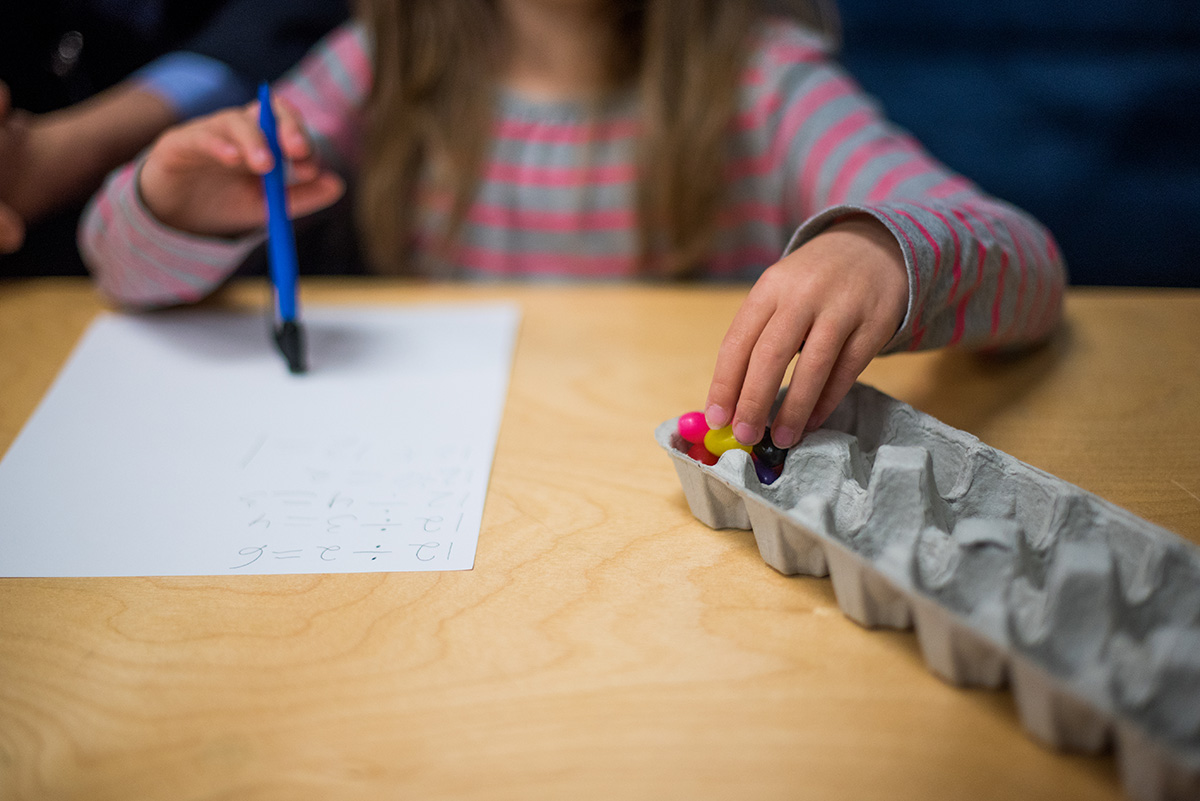 Sustained Learning
Sustained Learning
This activity shouldn’t take more than twenty minutes. Over the next couple of days, review with your child, and let him practice independently. Keep the egg carton and jelly beans handy, so your child can work out the problem hands-on each time. After he works a problem out with the jelly beans, he can write down his discovery.
Remember, you’re not trying to guide your child to achieve mastery of division right now. You’re introducing it ahead of third grade, when your child will spend more time developing skill with division. So after a week, move onto another math concept your child has more experience with.
My wife and I have found that these interactive math activities ignite a joy of learning for our children. It turns play into guided discovery and develops a strong number sense in our children. Try this activity out toward the end of your child’s second-grade year.